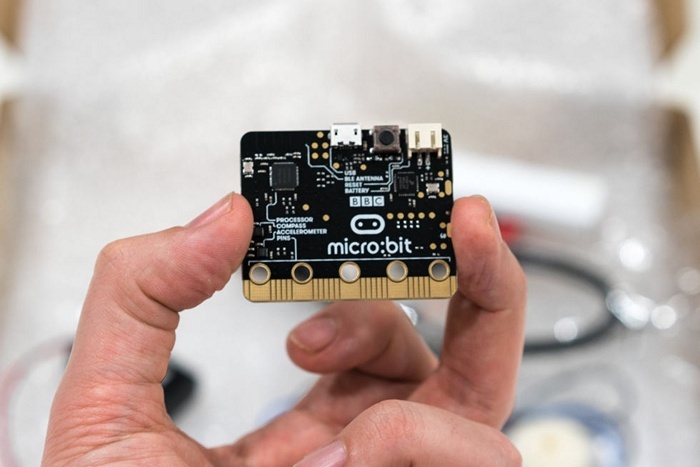BBC has started sending out a million micro microcomputers micro: bit to UK schoolchildren

For a whole year there were various rumors about the micro: bit microcomputer, which was developed by the BBC for mass distribution to schoolchildren. And so it happened. Beginning on March 22, the sending of all schools subscribed to the BBC micro: bit program began. This is part of the BBC Make it Digital project aimed at developing interest in the young generation in the study of modern technologies and programming. The target audience of this initiative is children aged 11-12 years and their teachers. This is not the first time the BBC has been developing a microcomputer specifically for schoolchildren; they did this in the 1980s by financing the development of the BBC Micro , which was quite popular in British schools at the time.
Non-schoolchildren will also be able to get a copy of micro: bit for their own DIY projects. But what will be the commercial price is still unknown. It is assumed that at the level of Raspberry Pi Zero (£ 4 / $ 5), the first batch of which was fully sold out within one day . The representative of the BBC said that now they are fully engaged in organizing the distribution of a million copies of the microcomputer to schoolchildren, they will think about the commercial possibilities of the project later.
For the development of this level of complexity, the BBC benefited from extensive sponsorship support: Microsoft provided the project with a development environment ( Touch Develop platform); Samsung have developed an application on Android; NXP provided USB controller, accelerometer, and magnetometer chips; Nordic Semiconductor its microcontroller chip; at Lancaster University, the core of the microcomputer software was developed. In general, more than 20 different companies and organizations anyway supported the micro: bit project.
')


A BBC representative said that every schoolchild in the box will receive the micro module itself: a bit, a USB cable and a battery pack. Teachers will also receive an introductory A4-size brochure with 32 pages of which is enough information to write basic programs that interact with the module’s periphery: LEDs, buttons, and sensors. It is also assumed that schoolchildren and teachers will actively use the micro: bit project site .
Micro: bit technical specifications

- Board dimensions 4x5cm.
- CPU: Nordic nRF51822, 16 MHz 32-bit ARM Cortex-M0 microcontroller, 256 KB of flash memory, 16 KB of RAM, also this microcontroller has a built-in 2.4 GHz Bluetooth module of low power consumption.
- To service the USB interface, the board has a separate Freescale Kinetis KL26Z 48 MHz microcontroller with an ARM Cortex-M0 + core.
- Freescale MMA8652 3-axis accelerometer with I²C bus.
- Freescale MAG3110 3-axis magnetometer with I²C bus (can be used as a compass or as a metal detector).
- 5x5 matrix of 25 LEDs.
- Three buttons: two for the user, one is locked to the reset function.
- 23 pins of general purpose I / O.
- Connectors: MicroUSB and power.
Simultaneously with the launch of the microcomputer distribution program, a corresponding section with 3D printing projects was created on the MyMiniFactory website, where there are already many different micro: bit case models.




Sources of news: one and second .
Source: https://habr.com/ru/post/371993/
All Articles